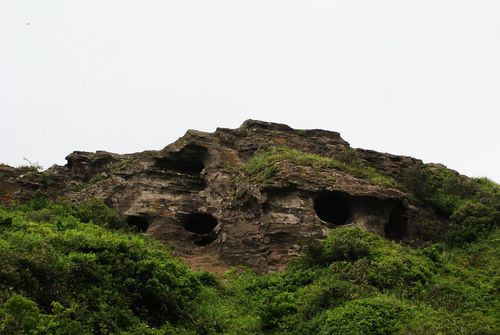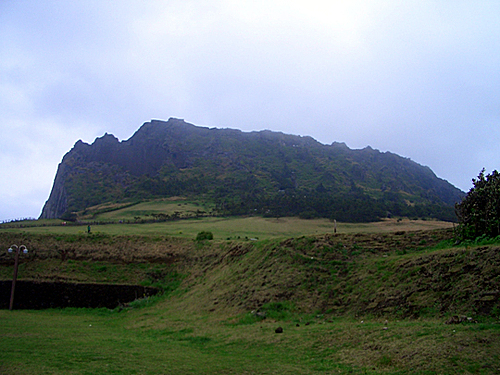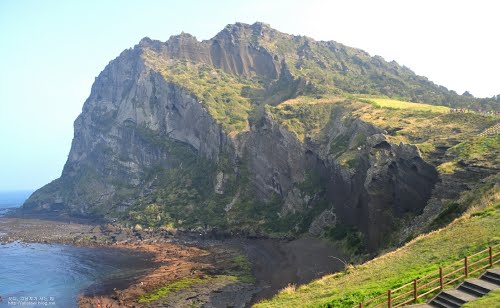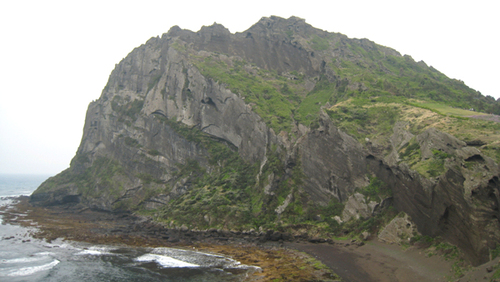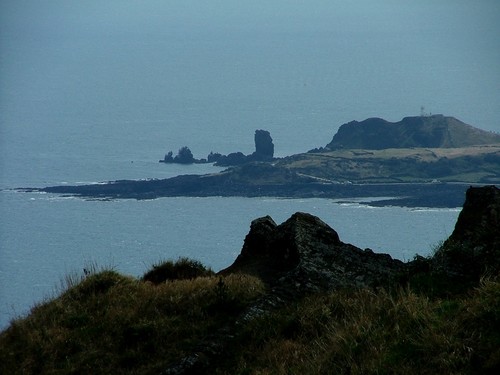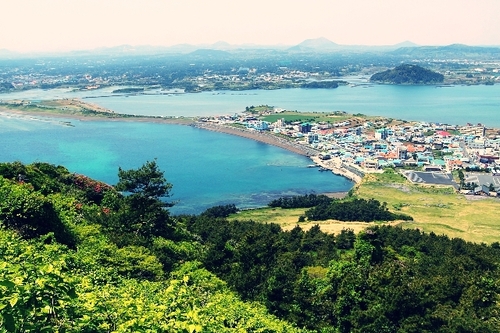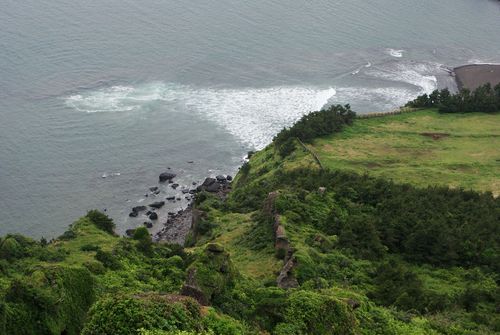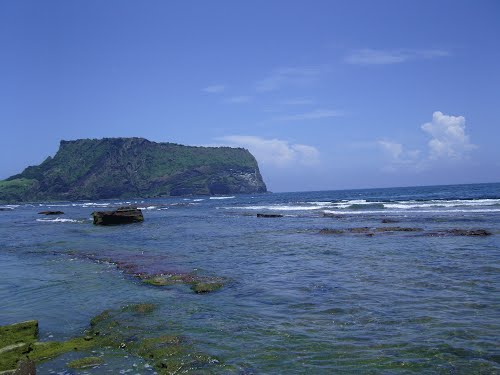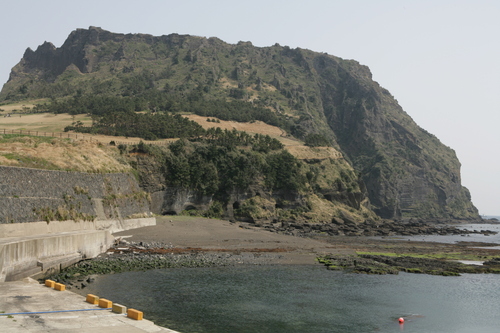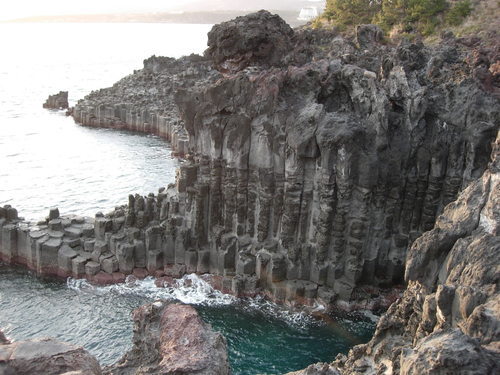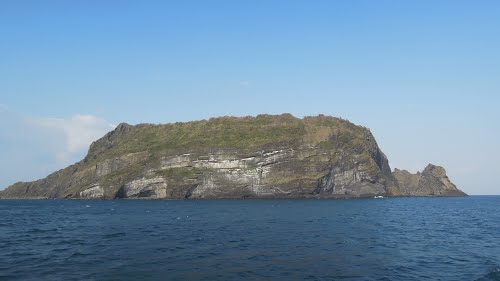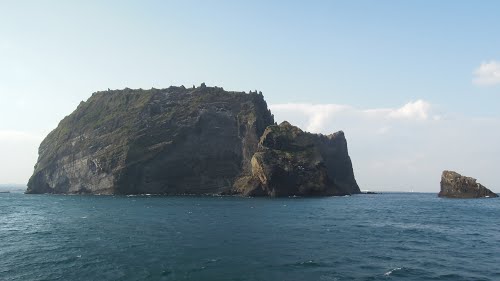Seongsan Ilchulbong, also called ‘Sunrise Peak’, is an archetypal tuff cone formed by hydrovolcanic eruptions upon a shallow seabed about 5 thousand years ago. Situated on the eastern seaboard of Jeju Island and said to resemble a gigantic ancient castle, this tuff cone is 182 meters high, has a preserved bowl-like crater and also displays diverse inner structures resulting from the sea cliff. These features are considered to be of geologic worth, providing information on eruptive and depositional processes of hydromagmatic volcanoes worldwide as well as past volcanic activity of Seongsan Ilchulbong itself.
Geological characteristics
Seongsan Ilchulbong Tuff Cone was formed by Surtseyan-type hydrovolcanic activity upon a shallow seabed about 5,000 years ago when the sea level was same as the present. Most volcanic cones or oreums (Jeju dialect for volcanic cones) were formed by piles of scoria cones which are created by Hawaiian eruptions or Strombolian eruptions. But Seongsan Ilchulbong Tuff Cone and a few other oreums on Jeju Island were hydromagmatic volcanoes which were made by piles of volcanic ash, the interaction of hot ascending magma and seawater or ground water. Seongsan Ilchulbong Tuff Cone is 180 meters high, and its crater is about 600 meters in diameter. It has a dip of strata up to 45 degrees and is 90 meters from sea level to the crater floor.
Seongsan Ilchulbong Tuff Cone erupted in very moist and sticky conditions allowing a lot of water to permeate into the volcanic vent, making the diverse depositional features of a wet eruption. The wet hydrovolcanic activity continued until the end of the eruption. Consequently, the tuff has a bowl-like crater unfilled by scoria or lava.
Except for the northwestern park, the Seongsan Ilchulbong Tuff Cone forms a steep cliff because of the resultant wave following its eruptions. Through these eruptions, Seongsan Ilchulbong Tuff Cone shows a perfect cross section from the intracrater strata to the marginal strata. Its diverse geological structures are considered to have great geological importance because they may be used to interpret not only the past volcanic activity of the Seongsan Ilchulbong Tuff Cone but also eruptive and depositional processes of hydromagmatic volcanoes worldwide.
There are numerous hydromagmatic volcanoes similar to the Seongsan Ilchulbong, but there are no other known hydromagmatic volcanoes with a well-preserved tuff cone and diverse internal structures along a sea cliff. Because of these scientific values and remarkable scenery, Seongsan Ilchulbong Tuff Cone was able to be designated as a UNESCO World Natural Heritage site.

